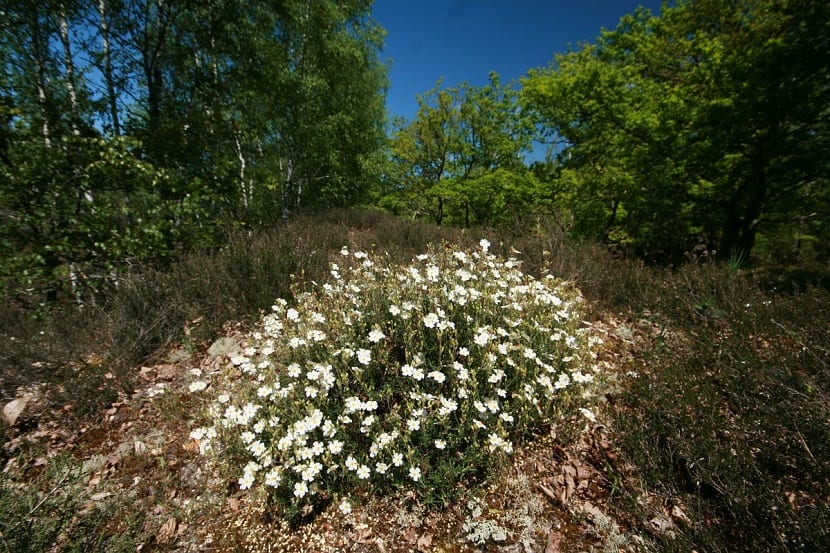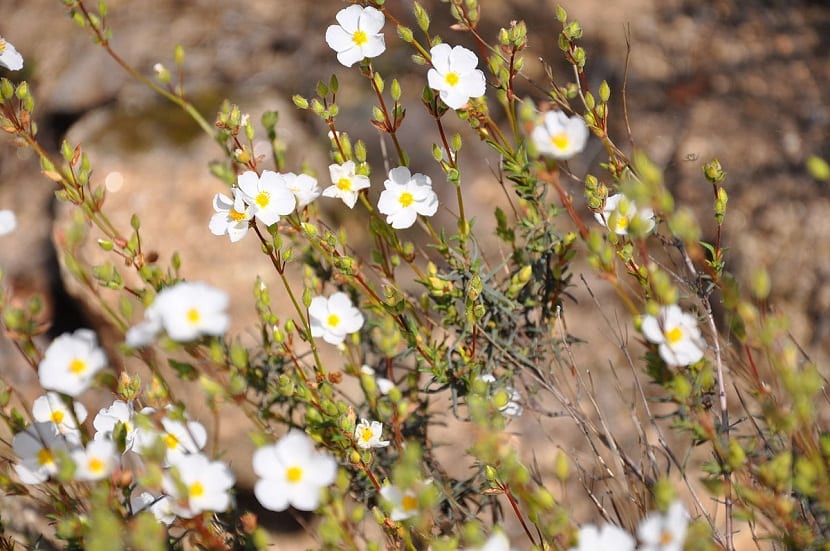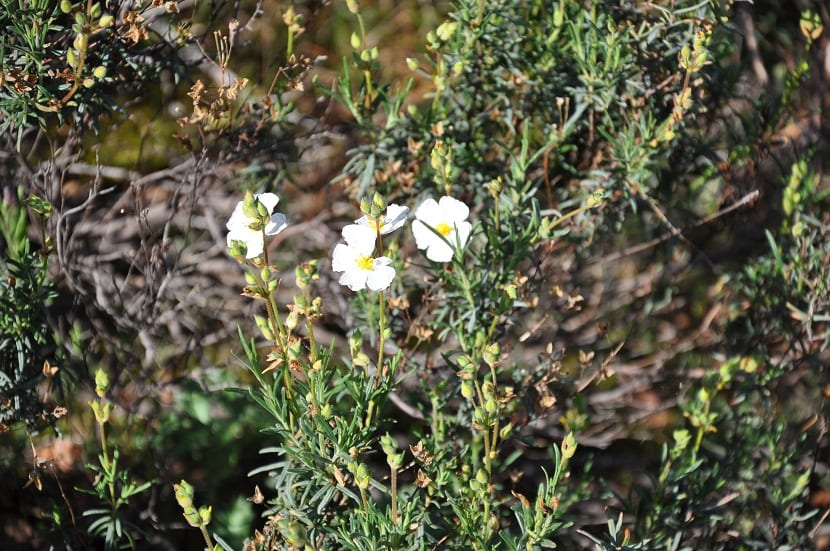
El Halimium umbellatum is a species that belongs to the Cistaceae family. It can be known by different names, such as white thyme, juagarcillo, revieja, tamarilla, Andalusian xagz, among others.
Its growth occurs depending on its subspecies, in northwest Africa as well as in the Iberian Peninsula, specifically in the Mediterranean area. Too can be found in siliceous places both in the center and in the northwest of the Iberian Peninsula, in the same way in Greece, Lebanon, Rhodes and France. The etymology of the word has two parts, a Greek and an Italian. The first word comes from Greece and means «orgaza or salgada", And the Latin epithet umbellatum means" shaped like an umbrella. "
Halimium umbellatum characteristics

In the following article we will know a little more about the characteristics of white thyme or jaguarcillo, its cultivation, if there is any type of disease or pests that may affect it, as well as habitat where it grows.
This plant in its lower part is woody, of at least 60 cm, although this measure can vary and become a little smaller. The leaves do not have a stalk and are found in large numbers on their stem, are elongated from about 8 mm to 20 mm, also narrow from about 2,5 mm to 6 mm, and are mostly, at their edges, rolled.
It has about three different hairs and thanks to the effect of one of them they are sticky. This plant blooms in the spring and summer seasons, has five white petals and dimensions of 7 mm to 15 mm. Unlike many other families, they are somewhat wrinkled, not stained, and the three green, pointed, oval-shaped sepals are found in a calyx inside. It has a large number of stamens and a short, straight stigma.
Its distribution is in groups that they range from one to eight flowers throughout the entire length of the stems. It blooms in spring, during the months of May and June, also being considered hermaphrodite flowers.
Habitat
Generally, these plants grow on heaths that are rich in genetics. They have a sub-Mediterranean climate, since they are not cool and humid places. You find them in soils that have little siliceous and in areas ranging from 400 to 1.800 meters of altitude. The distribution of this plant is North African Iberian and can be found among thyme plants or poor pastures and holm oak clearings above lands that are sandy.
Farming
They are plants that grow in places with a lot of light, being unable to grow in the shade. They resist high temperatures, although they are also capable of resisting different temperature variations, even if these are very extreme. The acid of the soils where it occurs can be of pH 3.5 or 5.5. What's more, can grow in soils devoid of nitrogen.
These plants have little chance of presenting diseases or being attacked by some type of pest. This may be because its presence in hot landscapes and on cliffs allows it to be free of this. If desired, can be planted in the home garden, adding showiness to the landscape, although their normal habitat can be very different.
Care

All plants are important, regardless of their origin or characteristics. Wild ones have a vital role, since through their seeds they carry out the reproduction cycle. Therefore, not only do they color the landscape, but they preserve their species, attracting insects and birds that, thanks to them, carry out pollination. Having developed without the intervention of man, they have a great biological quality.
Knowing the types of flora that may exist in our region is of vital importance to know how to maintain them, as well as to admire the flowers that they give. It is necessary to maintain the habitat of these plants, since their development can be of great value to the territory where they grow, therefore, it is everyone's duty to collaborate a little more and help them to be maintained for much longer and to create awareness so that they cannot damage this and many other species that grow in wild environments around the world.